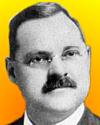
On 14 Feb 1877, Greenleaf Whittier Pickard was born, the American electrical engineer who invented the crystal detector, which opened the frontiers of early radio, and was a precursor of the transistor.
In the article An Untold Romance of Invention, you can read how Pickard's career began using a kite to collect upper air samples for a data bank to show whether the ice ages were caused by variations in the carbon dioxide content of the atmosphere. (If that sounds familiar, note that his experiments were in 1898!)
The article gives you the chain of events that led to his discovery of the crystal detector for radio. Chances are, Pickard's name is unfamiliar to you, but as always, it is fascinating to learn about the background to an invention, described in this article.

On 14 Feb 1859, George Ferris died. He was an American civil engineer, an inventor, and a pioneer for his development of structural steel in bridge building. His name remains known for one particular, breath-taking, audacious project. Today's book pick is: Circles in the Sky the Life and Times of George Ferris, by Richard Weingardt. In the summer of 1893, at the Columbian Exposition in Chicago, an engineering marvel was unveiled and immediately captured the world's attention. It was a towering, web-like giant wheel, standing upright and rotating high above the city. Several stories taller than any existing American building, the Ferris Wheel carried adventure-seeking passengers to the dizzying height of 264 feet and provided panoramic views never before possible. This book is the first full-length biography of George Ferris.
It is available from Amazon, typically about New from $38.00. Used from $21.00. (As of earlier time of writing - subject to change.)
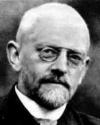 | Geometry is the most complete science. |
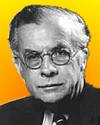 | To speculate without facts is to attempt to enter a house of which one has not the key, by wandering aimlessly round and round, searching the walls and now and then peeping through the windows. Facts are the key. |
 | I have a good idea every two years. Give me a topic, I will give you the idea! [Reputed to have been a remark made to the head of his department at Caltech.] |
| Before you look at today's web page, see if you can answer some of these questions about the events that happened on this day. Some of the names are very familiar. Others will likely stump you. Tickle your curiosity with these questions, then check your answers on today's web page. | |
| Births | |
 | Fritz Zwicky, born 14 Feb 1898, was a Swiss astronomer and physicist, who made valuable contributions to the theory and understanding to a certain type of star. Which type of stars were the subject of the theory for which he is remembered? |
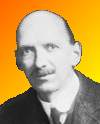 | C.T.R. Wilson, born 14 Feb 1869, was a Scottish physicist who received the Nobel Prize for Physics in 1927 for his invention of the Wilson cloud chamber. It is based upon the formation of clouds, which develop when sufficiently moist air is suddenly expanded, thus dropping the temperature below the dew-point. Thereafter, vapour condenses into small drops, formed around dust particles, but the cloud chamber served another purpose. What is the purpose of the Wilson cloud chamber? |
| Deaths | |
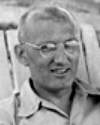 | Karl Jansky (1905-1950) was an American electrical engineer who found a certain emission came from a specific region on the sky every 23 hours and 56 minutes, from the direction of Sagittarius toward the center of the Milky Way. At the age of 26, he was the first to discover that celestial bodies could emit this type of radiation as well as light waves. What part of the electromagnetic spectrum did Jansky find emitted from space? |
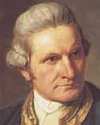 | An English seaman (1728-1779) was one of the first really scientific navigators. While surveying the coast of Newfoundland, he observed a solar eclipse. On the first of three expeditions into the Pacific (1768) he took Joseph Banks as the ship's botanist to study the flora and fauna discovered. (This practice of carrying a naturalist took place some 75 years before Charles Darwin's famous voyage.) In 1769, he observed the transit of Venus from the island of Tahiti. Can you name this Captain? |
| Events | |
 | On 14 Feb 2003, the world's most famous sheep - the first born cloned sheep - was put down. She had been suffering from a progressive lung disease. From her birth, at the Roslin Institute, Edinburgh, Scotland on 5 Jul 1996 fears were expressed about the wisdom of cloning, which were renewed upon her death. What was this sheep named? |
 | On 14 Feb 1747, James Bradley read a paper to the Royal Society describing a feature of the Earth's motion for which he coined the name “nutation.” For the word “nutation,” what does it describe, and what the meaning of the Latin word it is based on? |
Fast answers for the previous newsletter for February 13: decade including the year 1956 • head • France • ENIAC (the Electronic Numerical Integrator and Calculator) • electric charge of an electron • Galileo Galilei.
 If you enjoy this newsletter, the website, or wish to offer encouragement or ideas, please send feedback by using your mail reader Reply button.
If you enjoy this newsletter, the website, or wish to offer encouragement or ideas, please send feedback by using your mail reader Reply button. Your click on a Facebook, StumbleUpon, or other social button on the site webpages is also a welcome sign of appreciation. Thank you for using them.
© This newsletter is copyright 2020 by todayinsci.com. Please respect the Webmaster's wishes and do not put copies online of the Newsletter — or any Today in Science History webpage. (If you already have done so, please remove them. Thank you.) Offline use in education is encouraged such as a printout on a bulletin board, or projected for classroom viewing. Online, descriptive links to our pages are welcomed, as these will provide a reader with the most recent revisions, additions and/or corrections of a webpage. For any other copyright questions, please contact the Webmaster by using your mail reader Reply button.
--
If you do not want to receive any more newsletters, Unsubscribe
To update your preferences and to unsubscribe visit this link
Executive Real Estate Business Class
-
"It was like a man with wings. It wasn't like anything you'd see on TV or in a monster movie." ...
About the publisher
Search This Blog
Blog Archive
-
▼
2021
(585)
-
▼
February
(72)
- Mary Seacole | The Spitfire | George Washington
- On This Day for February 28 - Olof Palme assassina...
- On This Day for February 27 - Chile struck by eart...
- On This Day for February 26 - Napoleon's escape fr...
- On This Day for February 25 - Ousting of Marcos in...
- Demystified: How Do Penguins Tell Each Other Apart?
- On This Day for February 24 - U.S. President Andre...
- On This Day for February 23 - Alamo besieged by Sa...
- On This Day for February 22 - Cloning of Dolly, Ge...
- Your essential guide to the Tudors | LGBT+ history...
- On This Day for February 21 - Malcolm X assassinat...
- On This Day in History by OnThisDay.com: You are n...
- February 21: The 1st Romanov Tsar, the 1st Locomot...
- On This Day for February 20 - John Glenn's orbit o...
- On This Day for February 19 - Iwo Jima invaded by ...
- 🎉 Ready for 30% Off Kids' Memberships?
- On This Day for February 18 - Pluto discovered by ...
- Newsletter for Thursday 18 February.
- Demystified: Why Does Salt Melt Ice?
- On This Day for February 17 - Vietnam invaded by C...
- Newsletter for Wednesday 17 February.
- On This Day for February 16 - Power in Cuba seized...
- Newsletter for Tuesday 16 February.
- On This Day for February 15 - USS Maine destroyed,...
- Newsletter for Monday 15 February.
- February 15: The King of Persia, the Human Genome ...
- Who was Saint Valentine?
- On This Day for February 14 - Fatwa issued against...
- Newsletter for Sunday 14 February.
- February 14: Battle of Cape St Vincent, the Teleph...
- On This Day for February 13 - William and Mary cro...
- Newsletter for Saturday 13 February.
- February 13: Baghdad falls to the Mongols, the Bil...
- On This Day for February 12 - Chile's independence...
- Newsletter for Friday 12 February.
- February 12: The Qing Dynasty Ends, The Senate Acq...
- Demystified: Why Do We Say “A Pair of Pants”?
- On This Day for February 11 - St. Bernadette's fir...
- Newsletter for Thursday 11 February.
- February 11: Margaret Thatcher's Rise to Power, Ne...
- Watch ‘Tuskegee Airmen: Legacy of Courage’
- 🇺🇸💰Your Presidents' Day Exclusive Bonus!
- On This Day for February 10 - Kasparov-versus-comp...
- Newsletter for Wednesday 10 February.
- February 10: End of the French-Indian War, HMS Dre...
- All-New Tonight: 'The Food That Built America' Sne...
- On This Day for February 9 - Calcutta restored to ...
- Newsletter for Tuesday 9 February.
- February 9: Massachusetts Rebels, the Battle of Gu...
- On This Day for February 8 - Mary, Queen of Scots,...
- Newsletter for Monday 8 February.
- February 8: Mary Stuart is Decapitated, Napoleon L...
- What did Mary Tudor think of Anne Boleyn and her o...
- On This Day for February 7 - British Invasion laun...
- Newsletter for Sunday 7 February.
- February 7: The 1st English Prince of Wales, the M...
- Newsletter for Saturday 6 February.
- On This Day for February 6 - Accession of Elizabet...
- February 6: Maximilian I and Elizabeth II Ascend t...
- Black History Month: The Tuskegee Airmen Documenta...
- On This Day for February 5 - Punic Wars ended, Han...
- February 5: Congo Taken as a Personal Possession a...
- On This Day for February 4 - Yalta Conference open...
- February 4: The Chinese Song Dynasty, World's Olde...
- Serving Up an All-New Season
- On This Day for February 3 - Fifteenth Amendment t...
- February 3: The Naval Battle of Diu, Universal Suf...
- On This Day for February 2 - Ban on African Nation...
- February 2: New Amsterdam Grows Up, the US Pays Me...
- On This Day for February 1 - Space shuttle Columbi...
- Newsletter for Monday 1 February.
- February 1: Black History Month Starts and a Day o...
-
▼
February
(72)
-
Blogroll
-
About
HistoryFact










0 comments:
Post a Comment